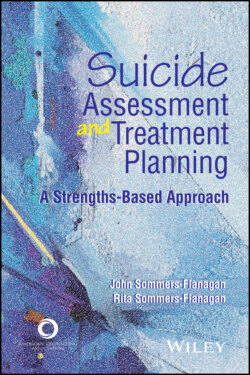Читать книгу Suicide Assessment and Treatment Planning - John Sommers-Flanagan - Страница 62
Case Vignette 2.2 Indirect Giving to Preserve Boundaries
ОглавлениеSharon was a school counselor who regularly visited with Hallie, a 14-year-old girl who lived in a group home because her mother was suffering from meth addiction. Hallie reported occasional suicidal thoughts. She was the brunt of jokes in the hallways because of her weight and wardrobe. Sharon was sympathetic and worried. She asked Hallie whether she could call the group home parents for a consultation. Hallie agreed.
The group home parents, Paul and Michelle, met with Sharon and Hallie. Together they made a plan for Hallie to see a mental health counselor and for Hallie to get an earlier ride home to avoid contact with bullies. Sharon also talked with the school principal about ways to address the bullying directly.
Because access to mental health counseling was limited, Sharon agreed to have Hallie meet with her for brief check-ins until Hallie got her own counselor. Sharon also connected Hallie and her group home parents to a school fund available for students to buy clothes, eyeglasses, and other items. Sharon did not mention that she was a regular donor to this fund.
Sharon was aware that it would feel gratifying to give clothing directly to Hallie, but she also recognized that doing so would be a boundary break. She wanted to preserve the emotionally supportive relationship she had with Hallie. If Hallie knew Sharon was providing clothing, Hallie’s expectations might have shifted. Here are two possibilities:
Hallie might have felt indebted, guilty, or ashamed. She might have pulled back and minimized contact with Sharon, despite her needs for emotional support.
Hallie could have begun regularly orienting to Sharon for her material needs.
Either way, small boundary breaks can have big implications for counseling and the counseling relationship.
Here are a few basic boundaries we generally recommend:
Unless your school or agency requires it and provides appropriate liability coverage, do not transport agitated clients who may be suicidal or agree to ride with them in their cars.
Do not invite clients to join you at social events or places of worship.
Do not invite clients to your home.
Do not give your clients your private contact information.
Do not discuss your family members with clients.
In Case Vignette 2.2, Sharon’s school counseling load included 300 students. She could not provide the contact and care for each of them that she was temporarily extending to Hallie. Sharon knew her limits. She brought in the group home parents, had a safety plan in place, and was actively working with Hallie to transition her mental health care to an appropriate community resource.
